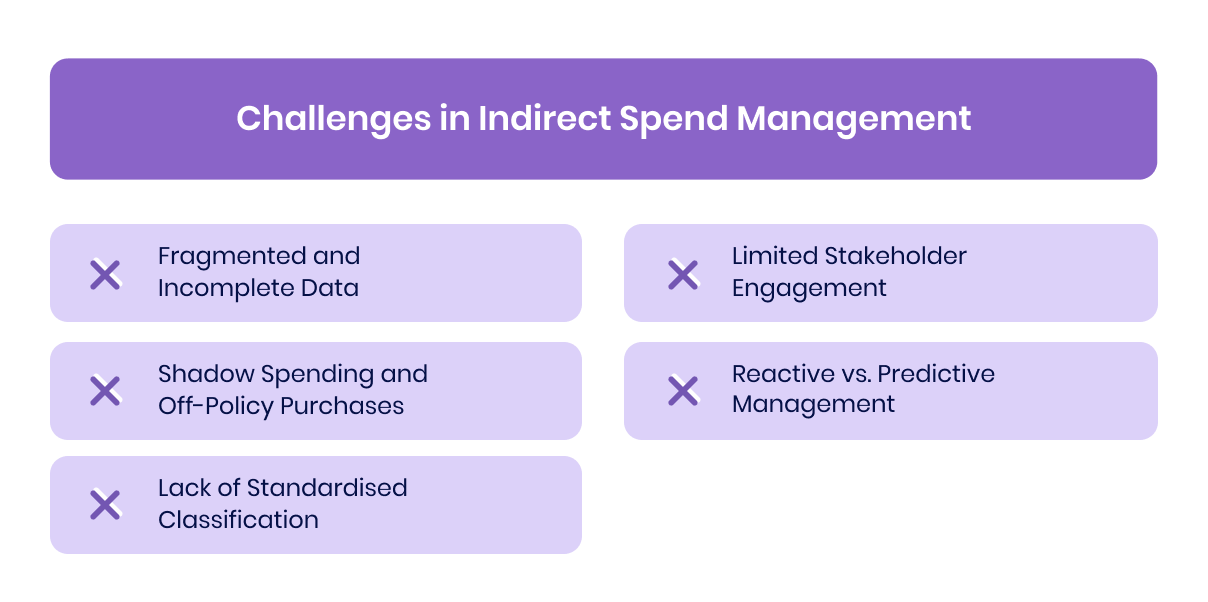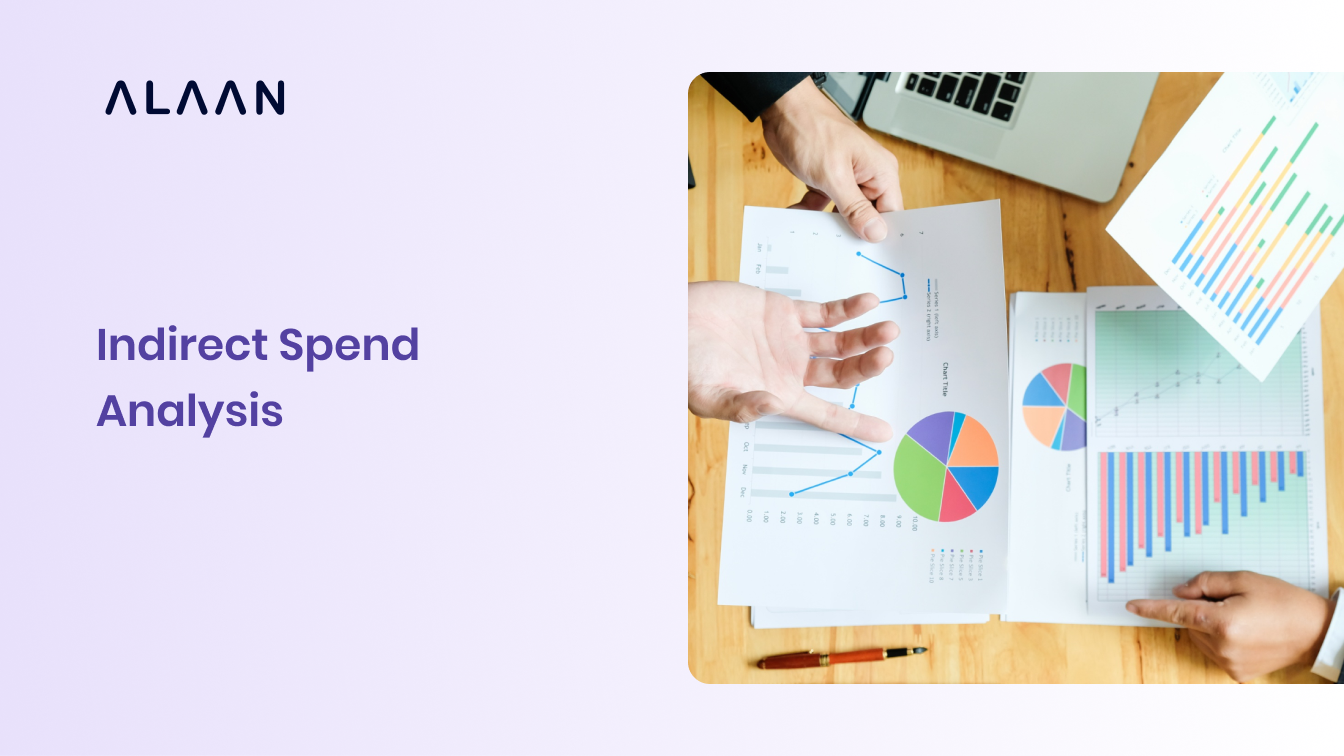In most UAE enterprises, the conversation around cost optimisation centres on direct procurement, the raw materials and core inputs tied to revenue generation. Yet the biggest untapped savings often hide elsewhere: in indirect spend.
Indirect expenses, from marketing and travel to IT subscriptions and facilities management, typically account for 40–60% of total organisational spend, but are rarely monitored with the same rigour as production costs. These purchases are scattered across departments, paid via multiple channels, and often bypass procurement controls entirely.
For finance leaders, this creates a blind spot. Small, routine purchases aggregate into significant overheads, eroding margins and complicating audits. That’s why indirect spend analysis is now emerging as a core capability for modern finance and procurement teams, a discipline that brings visibility, accountability, and strategy to what was once considered “miscellaneous”.
In this article, we break down how businesses can identify hidden value within non-core spend, align finance and procurement priorities, and leverage automation to control costs without slowing operations.
Key Takeaways
- Indirect spend is strategic. Non-core costs often account for up to 60% of total spend, yet remain the least analysed.
- Visibility is leverage. Consolidating and categorising spend data exposes cost-saving and supplier rationalisation opportunities.
- Governance ensures compliance. Embedding policies and audit controls reduces risk and improves financial accuracy.
- Automation closes the loop. Real-time expense tracking and ERP integration prevent cost leakages before they happen.
Defining Indirect Spend and Its Role in Procurement
Indirect spend refers to all goods and services purchased to support day-to-day operations but not directly tied to the creation of products or services.
Typical categories include:
- Office supplies, marketing, and advertising.
- Professional services (consulting, legal, audit).
- IT, telecom, and SaaS subscriptions.
- Employee travel, training, and facilities management.
In contrast, direct spend covers inputs that go directly into production, raw materials, components, and logistics tied to revenue generation.
While direct procurement usually operates under structured contracts and forecasting models, indirect spending tends to be fragmented. Each department manages its own vendors, negotiates contracts independently, and approves payments on separate systems.
This decentralisation is precisely what makes indirect spend both complex and full of opportunity. When left unmanaged, it leads to maverick buying, duplicate vendors, and unclaimed tax credits. But when analysed effectively, it becomes a source of cost efficiency, supplier leverage, and financial transparency.
Also read: Sample Business Expense Policy Guidelines and Examples
The Business Case for Indirect Spend Analysis
In many organisations, indirect spend has historically been treated as a cost of doing business, too small in individual transactions to merit close oversight. But for growing companies, especially in the UAE’s competitive, service-driven economy, this mindset is changing rapidly.
1. Indirect Spend Can Represent Half of Total Procurement
It’s common for indirect expenses, marketing, professional services, and technology to account for 40–60% of overall corporate spend. Yet, this segment often lacks consolidated visibility.
Without structured analysis, duplicate vendors, overlapping subscriptions, and unreviewed renewals quietly inflate overheads. In contrast, organisations that conduct periodic indirect spend reviews can identify 10–15% in annual cost savings through contract consolidation and improved negotiation leverage.
2. Uncontrolled Indirect Spend Undermines Financial Accuracy
Because indirect spend is decentralised, it often bypasses formal procurement and budgeting channels. Employees make small purchases with personal cards or departmental accounts, resulting in fragmented data across systems.
For finance teams, this creates two key issues:
- Inconsistent categorisation: expenses are logged under different GL codes, distorting reporting accuracy.
- Delayed visibility: finance only discovers cost spikes at month-end, long after decisions could have been corrected.
An integrated spend analysis process corrects this by linking procurement data, invoices, and payment records, giving finance real-time visibility into every non-core cost centre.
[cta-4]
3. Supplier Rationalisation and Value Capture
A common outcome of indirect spend analysis is the discovery of supplier redundancy, multiple vendors providing the same service under varying terms. Rationalising these suppliers doesn’t just lower costs; it strengthens negotiation power and simplifies contract management.
For instance, one UAE-based construction firm discovered over 25 marketing vendors engaged by different business units. A structured review allowed them to consolidate to five, saving over AED 1.2 million in annual costs.
Also read: Understanding Spend Visibility and Its Business Benefits
4. Strengthening Compliance and Audit Readiness
Indirect procurement is where most non-compliance risk lives, especially in professional services and marketing spends, where invoices are often descriptive, not detailed.
Spend analysis enforces documentation consistency, ensures supplier due diligence, and validates that all payments align with approved policies and VAT guidelines.
The result? Finance leaders gain a cleaner audit trail, better vendor accountability, and greater confidence in statutory filings.
Also read: Business Spend Management Tools and Their Importance
In short, indirect spend analysis converts opacity into leverage. By combining financial data discipline with procurement strategy, companies can unlock hidden savings while strengthening operational governance.
Core Steps and Best Practices in Indirect Spend Analysis

An effective indirect spend analysis doesn’t start with spreadsheets; it starts with clarity. The goal is not only to find where money goes, but also to understand why it’s being spent, who approves it, and whether it delivers value.
Below are the five foundational steps that define a mature, repeatable framework for indirect spend analysis.
1. Collect and Consolidate All Spend Data
The first challenge is visibility. In most companies, indirect spend data is fragmented across procurement tools, accounting software, card statements, and even email approvals.
Finance teams should begin by aggregating every relevant data source, including:
- Vendor invoices and POs
- Corporate card and travel expenses
- Subscription payments and renewals
- Ad-hoc departmental spend
Once consolidated, this data becomes the foundation for analysis, but only if it’s standardised, which brings us to the next step.
2. Categorise and Normalise Spend
Raw spend data rarely tells the full story. Vendors may appear multiple times under slightly different names, or expenses might be tagged inconsistently across departments.
To make analysis meaningful, finance must standardise vendor names, GL codes, and expense categories.
Grouping spend into logical clusters, marketing, IT, facilities, logistics, creates visibility into cost centres that were previously invisible.
Also read: Automated Account Reconciliation Benefits and Steps
3. Segment Suppliers and Identify Cost Drivers
Once the spend data is clean, segment suppliers based on spend value, strategic importance, and renewal frequency.
For instance:
- Strategic suppliers: long-term, high-value contracts (e.g., IT infrastructure providers).
- Tactical suppliers: short-term or project-based services (e.g., marketing agencies).
- Transactional suppliers: small, frequent purchases (e.g., office supplies).
This segmentation helps finance identify where negotiation leverage exists and where standardisation can drive savings. Parallelly, map key cost drivers (e.g., service fees, usage volumes, contract terms) to uncover areas of inflation or inefficiency.
4. Benchmark and Rationalise
Comparing indirect spend across business units or against market benchmarks often reveals major discrepancies.
For example, two divisions might use similar vendors at different price points due to isolated procurement.
Benchmarking spend allows teams to rationalise vendor contracts, consolidate categories, and align pricing with market rates, without sacrificing service quality.
5. Establish Continuous Monitoring and Governance
The biggest mistake companies make is treating spend analysis as a one-time exercise. Instead, it must become a governance cycle, continuously updated through dashboards and real-time data integrations.
Modern spend management tools, like Alaan, help automate this loop by syncing every expense transaction with ERP systems, tagging vendors, and flagging anomalies as they occur.
This continuous oversight enables finance to not only detect inefficiencies but to prevent them before they happen.
Also read: ERP Integration Challenges and Solutions
When implemented together, these practices turn indirect spend analysis into a sustainable control mechanism, one that delivers measurable cost efficiency, procurement maturity, and compliance assurance across the organisation.
Governance, Controls, and Cross-Functional Collaboration

For most UAE enterprises, indirect spend cuts across multiple departments, marketing, admin, HR, logistics, IT. Each has its own budget, vendors, and approval chains. Without a unified governance structure, even the best analysis quickly loses relevance.
Effective indirect spend governance requires clear ownership, policy consistency, and collaboration between finance and operational teams.
1. Assign Clear Ownership
The first step is defining accountability.
- Finance should own oversight, policy setting, budget allocation, and compliance.
- Procurement manages supplier performance, contract negotiations, and sourcing optimisation.
- Department heads are responsible for justifying and approving category-level spending.
This tri-party ownership ensures that every spend decision is both operationally valid and financially visible.
2. Build Policy Controls Into the Process
Indirect spending tends to fall outside traditional purchase order systems. That’s why policy enforcement must be embedded directly into transaction flows.
Examples include:
- Pre-approved vendor lists for each expense category.
- Spend limits and approval hierarchies are enforced through expense management tools.
- Contract repositories for renewal tracking and audit trails.
Embedding these controls inside digital workflows ensures compliance without slowing down business activity.
Also read: Understanding Financial Statements: A Beginner’s Guide
3. Foster Collaboration Between Finance and Procurement
Procurement teams understand supplier markets; finance teams understand budget constraints and ROI. The best indirect spend programs bring both perspectives together.
Joint quarterly reviews between procurement and finance should cover:
- High-value vendor performance.
- Category-wise cost trends.
- Policy exceptions and non-compliant spend.
- New opportunities for contract consolidation or automation.
When both functions operate on a shared spend analytics dashboard, decisions become faster, and accountability improves.
4. Strengthen Audit and Compliance Frameworks
Indirect spend is a common area for policy leakage, especially in professional services and travel. To maintain control:
- Link every transaction to an approved vendor or PO.
- Digitise all invoices and attach them to the corresponding expense records.
- Conduct periodic spend audits to verify VAT compliance, duplicate vendors, and correct classification.
Platforms like Alaan simplify this by automatically mapping expense data to accounting ledgers, flagging anomalies, and storing digital receipts, making audits faster and less disruptive.
5. Institutionalise Continuous Improvement
Governance is not static. As vendor bases evolve and business models change, indirect spend policies must adapt.
Set up a spend governance committee that meets quarterly to:
- Review category-wise efficiency scores.
- Approve changes to vendor lists or policies.
- Identify automation opportunities or recurring bottlenecks.
By institutionalising this review cycle, finance teams transform indirect spend management from a reactive function into a strategic capability.
Also read: Improving Internal Control in Financial Reporting (ICFR)
With strong governance and collaboration in place, finance teams don’t just monitor indirect spend; they control it by design. Every transaction becomes traceable, every policy enforceable, and every dirham accountable.
Challenges in Indirect Spend Management (and How to Overcome Them)

Indirect spend analysis can quickly lose traction when operational realities interfere, data gaps, inconsistent reporting, and fragmented ownership. The problem isn’t awareness; it’s execution at scale.
Here are the most common challenges finance and procurement teams encounter, and how to address them systematically.
1. Fragmented and Incomplete Data
Indirect spend data is often scattered across departments, ERPs, and card statements, each using different categories or vendor codes. This makes the analysis inconsistent and unreliable.
How to fix it:
- Create a centralised spend repository that aggregates data from ERP, expense management, and procurement tools.
- Use consistent vendor naming conventions and chart of accounts mappings across systems.
- Automate reconciliation through platforms like Alaan, which capture and categorise every expense transaction in real time.
2. Shadow Spending and Off-Policy Purchases
Unapproved departmental expenses, such as SaaS tools or outsourced freelancers, are common blind spots. Shadow spending bypasses budget controls and undermines reporting accuracy.
How to fix it:
- Mandate corporate cards for all indirect categories to eliminate personal reimbursements.
- Enforce vendor-level spend rules and real-time alerts for off-policy purchases.
- Conduct quarterly compliance reviews to detect unauthorised spend trends early.
Also read: Control Employee Expenses and Improve Spending Management
3. Lack of Standardised Classification
Without a structured classification (e.g., UNSPSC or an internal category taxonomy), indirect spend can’t be properly compared, benchmarked, or analysed.
Marketing may call an expense “digital campaign,” while finance logs it as “professional services.”
How to fix it:
- Define a consistent category hierarchy and enforce it in all systems.
- Automate categorisation using AI or predefined expense rules.
- Integrate procurement and finance systems to ensure categories match across reports.
4. Limited Stakeholder Engagement
Finance often drives spend analysis alone, without business unit participation. As a result, cost optimisation initiatives face pushback from departments that don’t see shared value.
How to fix it:
- Involve business stakeholders early in the analysis process.
- Share dashboards that demonstrate savings and efficiency gains by department.
- Frame cost management as empowerment, not restriction, aligning goals across finance, procurement, and operations.
5. Reactive vs. Predictive Management
Many organisations still treat indirect spend analysis as an annual or quarterly project. By the time issues surface, the spend has already occurred.
How to fix it:
- Shift to real-time monitoring using spend analytics dashboards.
- Deploy AI-based forecasting to anticipate high-risk vendors or categories.
- Link spend data directly with budget variance reports to catch issues proactively.
Also read: Cash Flow Forecasting
When these challenges are addressed systematically, indirect spend analysis moves from being a reactive reporting task to a strategic feedback mechanism, guiding smarter procurement, stronger financial control, and faster decision-making.
How Alaan Supports Indirect Spend Analysis
At Alaan, we work with finance and procurement teams that want to transform how they manage non-core spending, from marketing and SaaS subscriptions to travel, utilities, and vendor services.
Indirect spend is complex by nature: decentralised across departments, billed through multiple channels, and often buried in manual records. Without the right tools, it’s almost impossible to track where every dirham goes or whether it aligns with policy and budget.
That’s exactly the challenge Alaan helps solve.
With AI-powered visibility and automation, Alaan enables finance teams to analyse, control, and optimise indirect spend in real time, without adding operational friction.
Here’s how:
- Unified visibility: All indirect transactions, from vendor invoices to card payments, appear in a single dashboard, providing finance and procurement with complete transparency.
- Policy-aware spending: Teams can set department-specific budgets, vendor restrictions, and approval limits to prevent off-policy or redundant purchases.
- AI-backed analytics: Our platform categorises spend automatically, flags duplicates or unusual trends, and highlights opportunities for supplier consolidation.
- VAT and audit compliance: Every expense is validated against FTA VAT requirements, with TRN extraction and invoice verification handled automatically.
- ERP integration: All indirect spend data syncs directly into accounting systems like Xero, QuickBooks, Oracle NetSuite, and Microsoft Dynamics, ensuring ledgers are updated instantly and accurately.
[cta-9]
By embedding these controls into everyday transactions, we help finance teams uncover hidden savings, strengthen governance, and build a continuous loop of financial accountability.
Book a demo to see how Alaan can help your business gain complete control and visibility over indirect spend, from supplier payments to real-time expense analytics.
Also read: Expense Management Software for Business Spend Tracking
Frequently Asked Questions
1. How can finance teams identify hidden savings in indirect spend?
Start by consolidating data across all expense categories and mapping it to suppliers. Most hidden savings come from duplicate vendors, underused subscriptions, and contract renewals that have gone unreviewed. Using spend analytics tools such as Alaan, finance teams can visualise non-core costs in real time, identify inefficiencies, and renegotiate vendor terms before renewals.
2. What are the most effective KPIs for indirect spend performance?
Key performance indicators include supplier consolidation ratio, percentage of spend under contract, cost savings realised vs. target, and PO compliance rate. Mature organisations also track invoice automation rates and policy exceptions to measure governance quality.
3. How does automation improve indirect spend management?
Automation eliminates manual data entry and fragmented reporting. It enables real-time categorisation, policy validation, and VAT compliance checks across all non-core expenses. Platforms like Alaan integrate directly with ERPs to automate reconciliation and analytics, cutting manual effort by over 70%.
4. What are the most common leakages in indirect procurement?
Leakages often occur in areas such as auto-renewed software licences, off-policy spending, and inconsistent VAT documentation. They rarely appear as single large losses; instead, they accumulate over time, quietly inflating operating costs. Automated approval and spend-monitoring systems prevent these leakages at source.
5. How should UAE businesses manage VAT compliance for indirect expenses?
VAT compliance is often overlooked in non-core categories such as marketing and SaaS purchases. Finance teams must ensure that all suppliers include valid TRNs and compliant tax invoices. Tools like Alaan automate VAT extraction and validation at the point of expense submission, reducing filing risks and audit penalties.
6. What’s the difference between spend visibility and spend control?
Visibility means knowing where money goes; control means managing how it’s spent. A company may have dashboards that show total spend but still lack policy enforcement or approval structures. The best organisations achieve both continuous visibility and control through integrated spend management systems.


.avif)






